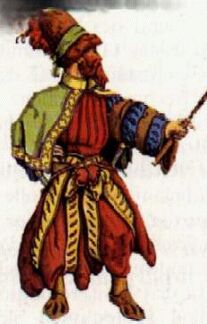
Course of the war
The 30-years-war lasted from 1618 – 1648. At beginning the Catholic
troops and the troops of the emperor, led by the generals Tilly and Wallenstein,
won against the Protestant enemies. Even the support of the Protestants
by Denmark was not successful.

By the restitutional edict of 1629, that said that all reformed atholic
churches were to become Catholic again, the German emperor seemed to become
too powerful, therefore also Catholic princes opposed him and he was forced
to fire Wallenstein, one of the most important supporters of imperial power.
The Swedish king Gustav. Adolf II of Sweden joined the war against the
German emperor following the request of France, which wasn´t able
to join the fighting, and on behalf of German Protestants. From 1630 to
1632 the Swedish king and the field sergeant Tilly, who was killed in a
fight in 1632, fought brutal battles. As the Swedish army became the main
threat for Germany, the emperor transferred the authority back to Wallenstein.
After several battles against Sweden and its king, who died in a battle,
Wallenstein decided to take up negotiations on his own in 1633, which was
supposed to ensure the peace. He was accused of high treason by the emperor,
fired and sentenced to death.  Now
the war, in which France finally fought together with Sweden against Germany,
became a huge robbery and a plundering war, which caused devastation in
Germany for more than one decade. In 1648 Germany was defeated by the powerful
opponents.In the same year the war came to an end after 30 years of fighting,
when the leaders signed the Westphalian Peace Treaty in Münster and
Osnabrück.
Now
the war, in which France finally fought together with Sweden against Germany,
became a huge robbery and a plundering war, which caused devastation in
Germany for more than one decade. In 1648 Germany was defeated by the powerful
opponents.In the same year the war came to an end after 30 years of fighting,
when the leaders signed the Westphalian Peace Treaty in Münster and
Osnabrück.